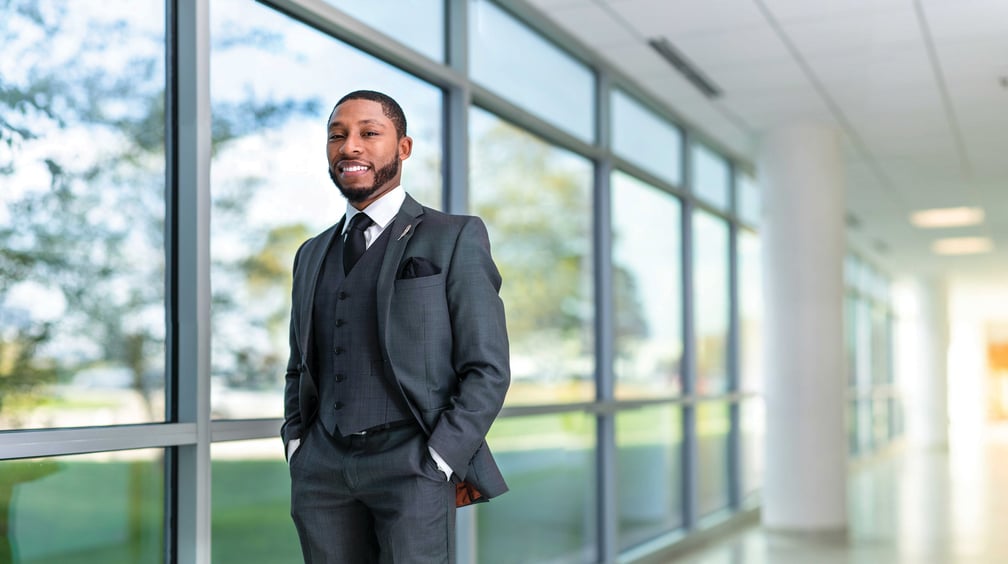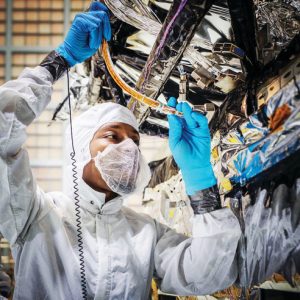
The observation window at Goddard Space Flight Center looks out onto the world’s largest clean room, where a gleaming golden hexagon is hoisted on display — a mirror segment left over from Kenneth Harris’ most recent project.
“We basically built a time machine,” explains Harris MSEM ’17. “It’s a space telescope that will allow us to see some of the first galaxies formed, and it’ll look back 13.5 billion years.”
After the James Webb Space Telescope launches in 2021, its gold-coated mirror will capture infrared light from the farthest reaches of the cosmos. Because wavelengths like visible light are stretched into infrared as they travel through the expanding universe, it’s the only way to see the earliest galaxies to form after the Big Bang. One of the youngest engineers on the project, Harris led the team that integrated the Electronic Compartment of the Integrated Science Instrument Module, which houses the science instruments into the telescope.
“It’s the ‘heart’ of James Webb that will allow us to collect all the data,” Harris says. “To be able to say we put that together, it works, that’s exciting. It’s what I’m proudest of, and I can always say that I touched that satellite.”
At 27, Harris has worked on multiple NASA satellite missions and has been named to Forbes’ 30 Under 30 list. His love of engineering developed early. Both parents worked, so his father, a Goddard mechanical engineer, would take him to the office after school. Harris remembers seeing engineers at work, watching shuttle launches, and napping on a piece of shipping crate foam his father kept by his desk. He began at NASA at 16 years old, interning at Goddard during the summer and offering his services during the school year.
He earned his bachelor’s degree in mechanical engineering from the University of Maryland, Baltimore County, then earned his master’s degree through the Whiting School’s Engineering for Professionals program.

Today, he uses his NASA background to connect both children and college students to the space agency, visiting schools and working through NASA communications and social media to encourage STEM careers, and always making himself accessible for questions and advice. In November, he plans to run for the school board in Prince George’s County, Maryland.
“The one thing I tell my mentees is, it’s bigger than you,” he says. “It’s not for my career, because I don’t have to be involved in STEM education to excel. I do this because I realize there’s a need for it. It’s bigger than you—pay it forward.”




